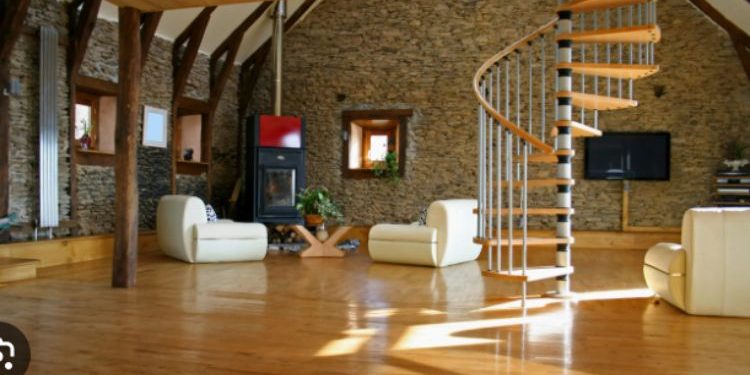Solid wood floors can be sanded and refinished, which makes them appealing to those who want to change the look of their floor. Oil-based stains and varnishes can also be used to create texture effects such as brushing or distressing, popular in recent trends.
Solid wood floors are made of one piece of real wood from top to bottom. They can be installed in above-ground rooms but are not recommended for areas exposed to moisture and humidity such as bathrooms and laundry rooms.
Cost
Solid wood floors are highly durable and increase the value of your home. They can be sanded and refinished several times over their lifetime. This refinishing process can make them last decades or even centuries. This makes them a great investment for homeowners. They are also very easy to clean and look gorgeous in any room of your home.
However, solid wood flooring is more expensive than other types of flooring. It can cost $6 per square foot or more. This price includes the material and installation. It’s best to have them installed by a professional as mistakes can be costly. You can choose from a wide range of styles and stains to suit your needs and preferences. Some options include a herringbone pattern or hand scraping. They are also available in a variety of thicknesses. The thicker the boards are, the more durable and refinishable they will be. The thinner boards are more affordable, but will not hold up as well to refinishing.
Durability
Wood floors are a beautiful, durable choice for homes. They’re resistant to damage and stains, withstand heavy foot traffic, and can be refinished multiple times. They’re also easy to maintain, with sweeping, vacuuming, and occasional use of mild cleansers. The durability of a wood floor depends on the species, thickness, and finish used. Harder species, such as maple or hickory, are more durable than soft ones like cherry or birch.
The most important factor in determining hardwood flooring durability is the species’ Janka hardness rating. This test measures the amount of force required to bury a steel ball halfway into the wood. Oak, for instance, has a Janka hardness rating of 1300.
Solid wood floors are not recommended for high-moisture areas or below grade (basement) installations, because they can swell and warp over time. However, engineered wood flooring is more tolerant of moisture and can be installed on concrete and over radiant heat systems. It’s also more affordable than solid wood flooring.
Appearance
Solid Wood Flooring is a beautiful option that works with almost any design style. It can be sanded and refinished to renew the appearance or change its color as trends dictate. A variety of texture techniques can be applied such as brushing to raise the grain or rustic to replicate reclaimed rustic planks. A variety of stains can also be used to create the right tone for your space. At Carlisle we offer a wide range of real wood floors including character grade which offers knots, sap and other natural features that can make a floor more unique.
However, solid wood is prone to moisture damage and is not suitable for below grade rooms. It is also not recommended for areas prone to excessive humidity. This is because the wood swells in these conditions which may lead to gaps in the floor. This is why it is necessary to use an expansion gap and acclimate the floor before installation.
Maintenance
Solid wood flooring is easier to maintain than carpet, with simple sweeping and occasional mopping using a special wood cleaner. It is also more durable, with no hiding places for grit and dust that can scratch or damage a carpet. In addition, it improves air quality and provides better acoustics than a carpeted floor.
Unlike laminate and engineered wood, solid hardwood is made from a single piece of wood and can be sanded down and refinished several times over its lifespan. This makes it one of the most durable and attractive floors available.
Choosing a species of hardwood that matches your style is an important consideration. Some species, such as maple and walnut, are traditional favorites while exotic species like Wenge and Zebrano add a bold touch. Solid wood is a great choice for above-ground rooms but should not be used below grade or in areas where excessive moisture can occur. It is also not compatible with underfloor heating.



